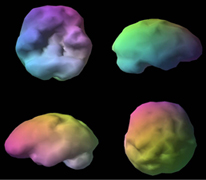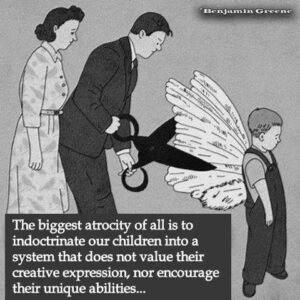Teaching Strategy s for Phonics and Reading
- Brain Based Approach To Teaching And Learning (latest Research)
- How To Make Money Using Ring Around The Phonics
- If The Child Knows Their Phonic Sounds, But Is Having Trouble
- Kinesthetic/Hands on Learners
- History of the game
- Learning to read with phonics verses word memorization
- How to use this game in a class room setting
- How to teach several children at one time even if on different subjects (including math History and more).
- Teaching comprehension, listening skills, and sequencing
- Gift Idea
- Fund raiser
- Why should learning phonics be fun?
- Frequently Asked Questions
- How to Homeschool
- Does my child have a learning disorder?
- How to help children with learning disorders
- Hearing exercises for those with Cochlear Implants or hearing aids.
- How to Help Your Child Learn
- Children with ADD or ADHD
- How to Improve Children’s Brain Health
- Gail Saltz, M.D. provides valuable information for parents who have children diagnosed with learning disabilities.
- How to Teach Sequencing
- Labeling people and it’s consequences
- History Lesson: Republic Defined
- History Lesson: History Rewritten
- History Lesson: Is The Constitution A Slave Document?
Teaching Strategy that is a Brain Based Approach To Learning And Teaching
 New developments in cognitive science are unraveling the mysteries of emotions; the findings have much to teach us about how students do—–or do not —-learn. The body brain connection can work against us or for us. It is our choice. You see, learning is as natural as breathing, and it is possible to either inhibit or facilitate it. In other words: The conventional method (workbooks, flashcards, lectures, sit down at a desk type work) is left brain teaching. But not everyone learns best from the left brain. So here we will show you what happens when you teach to the whole brain as Ring Around The Phonics does.
New developments in cognitive science are unraveling the mysteries of emotions; the findings have much to teach us about how students do—–or do not —-learn. The body brain connection can work against us or for us. It is our choice. You see, learning is as natural as breathing, and it is possible to either inhibit or facilitate it. In other words: The conventional method (workbooks, flashcards, lectures, sit down at a desk type work) is left brain teaching. But not everyone learns best from the left brain. So here we will show you what happens when you teach to the whole brain as Ring Around The Phonics does.
I. Hippocampus (part of the Limbic System)
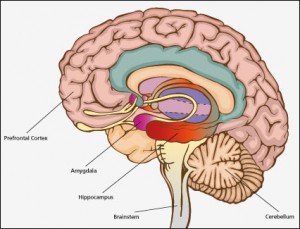
Cortisol and the endorphins can effect student’s behavior in the class room, and their ability to learn. When our inability to fend off danger triggers a stress response, cortisol is released by our adrenal glands. It activates an important body/brain defensive responses. Note: Our stress responses do not differentiate between physical and emotional danger.
Example
For example, a 2nd grader refuses to complete an arithmetic assignment. The irritated teacher’s stress system inappropriately responds by releasing clotting elements into the blood, elevating cholesterol levels, depressing the immune system, tensing large muscles, increasing the blood pressure, and much more. It is normal human response, but a logical response only if the student was threatening the teacher with a knife or a gun. However, the adrenal glands do not differentiate: they treat emotional danger the same as physical danger. Furthermore, the same can be said for the student’s response to the teacher.
Chronic stress causes brain damage:
It is important to note that chronic high cortical levels in children can eventually destroy hippocampus neurons associated with learning and memory. Therefore even short-term stress-related elevation of cortical in the hippocampus can hinder our ability to distinguish between important and unimportant elements of a memorable event. As a result, stressful school environments ( too much emphasis on testing) reduce the school’s ability to carry out its principal mission…to educate.
Regulator I: The Brain Stem and Limbic System
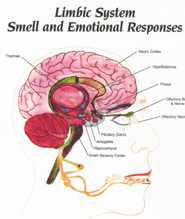 The Limbic system, composed of several small interconnected structures, is our brain’s principal regulator of emotion and plays important roles in processing memory. Just as cortisol can hinder learning and memory, the limbic system can assist with memory. Learning. Memories formed during a specific emotional state tend to be easily recalled during a similar emotional state later on. For example, during an argument, we easily recall similar previous arguments. Thus, classrooms simulations and role-playing activities enhance learning because they tie memories to the kinds of emotional contexts in which they will later be used. That is why teaching games (whole Brain Teaching) work so well.
The Limbic system, composed of several small interconnected structures, is our brain’s principal regulator of emotion and plays important roles in processing memory. Just as cortisol can hinder learning and memory, the limbic system can assist with memory. Learning. Memories formed during a specific emotional state tend to be easily recalled during a similar emotional state later on. For example, during an argument, we easily recall similar previous arguments. Thus, classrooms simulations and role-playing activities enhance learning because they tie memories to the kinds of emotional contexts in which they will later be used. That is why teaching games (whole Brain Teaching) work so well.
The Thalamus and hypothalamus can trigger a quick, emotionally loaded (but perhaps also lifesaving) behavior before we fully understand what is happening., and it is the mechanism that underlies many explosive emotional outbursts during a typical school day.
Regulator II: The Cortex
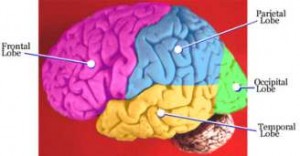 The cerebral has a left and right hemisphere. The right hemisphere synthesizes the background or contextual information (the forest). Meanwhile, the left hemisphere is analyzing the foreground information (a tree in the forest).
The cerebral has a left and right hemisphere. The right hemisphere synthesizes the background or contextual information (the forest). Meanwhile, the left hemisphere is analyzing the foreground information (a tree in the forest).
The right hemisphere processes important emotional content of faces, gestures, and language–In other words, how something was communicated. However, the left hemisphere is processing the objective content of language–what was said.
(Interesting side note: A brain scientist
Jill Bolte Taylor, gives some fascinating insight in to the functions of the left an right brain as she explains her personal experience with a stroke.)
Sensory lobes in the back store sensory memories (the past). But frontal lobes focus on critical thinking and problem-solving strategies (the present). However, the front part of the lobes are in charge of planning and rehearsal activities (the future).
The Frontal Lobes are the “critical thinker”:
The frontal lobes play a very important role in regulating our emotional sates and judgments. It is the critical thinker….Tthe part of the brain that thinks about the consequences of an action, is not fully developed until the mid 20-s. Furthermore, people who have frontal lobe damage can exhibit serious emotional problems.
What Does Work:
So what did work? Developing the frontal lobe workes. How? It was discovered that even though we all have some degree o false ideas, criminals have more.
For example:
Criminals (like many children) will often say, “Well everyone is doing it“. The right response is, “Well it depends on who your friends are. Mine aren’t doing those things.” Simply put, replace dysfunctional ideas with functional ideas. In other words, a healthy frontal lobe helps one to override the execution of automatic behaviors, and of potentially destructive illegal or immoral behaviors.
SPECT Scan of healthy brain
SPECT Scan of unhealthy frontal lobe
Classroom Applications (What you can do)
(People have enormous difficulty learning when either parts of the whole (left and right brain and emotions) are neglected. Concentrating too heavily on the storage and recall of unconnected facts is a very inefficient use of the brain. ). Studies show that with whole brain teaching (also known as Total Physical Response) , children learn faster, retain more, dropout rates decrease by 90%, and the health of the brain is improved (use it or lose it).
- Emotions simply exist; we don’t learn them in the same way we learn telephone numbers, and we can’t easily change them. But we should not ignore them. So show children how and when to use rational processes to override their emotions, or to hold them in check. “Emotions hurt no one…it is what we do with them that counts.”
- Learning is enhanced by challenge and inhibited by threat. Emotionally stressful school environments (for either the teacher or student) are counterproductive because they can reduce students’ ability to learn. Therefore ,it is important to reduce unhealthy stress.
- Learning is influenced by the natural development of the body and brain. According to brain research for example, there can be a five-year difference in maturation between any two “average” children. Gauging achievement on the basis of chronological age is therefore inappropriate. (see teaching tip #9)
- The brain understands and remembers best when facts and skills are embedded in natural spatial memory. In other words, We remember what we experience. Our native language is learned through multiple interactive experiences involving vocabulary and grammar. It is shaped both by internal processes, and by social interaction (Vygostky 1978). That is an example of how specific items are given meaning when embodied in ordinary experiences. This same principle can be applied to every subject. In fact that is exactly what Ring Around the Phonics does.
Spatial Memory:
Spatial memory is generally best invoked through experiential learning (GAMES, discussions, demonstrations, field trips, real life experiences, …).
Teachers should not exclude lectures, and sit down at a desk type work; but they should make them part of a larger experience.
Example:
A class of first graders scampered among nearby pine and birch trees, each holding a stack of the teacher’s homemade laminated “outdoor math” cards. “Find a stick as big as your foot,” one read. “Gather 50 rocks and acorns and lay them out in groups of ten,” read another. Working in teams, the 7- and 8-year-olds raced to see how quickly they could carry out their tasks. Aleksi Gustafsson, whose master’s degree is from Helsinki University, developed the exercise after attending one of the many workshops available free to teachers in Finland. “I did research on how useful this is for kids,” he said. “It’s fun for the children to work outside. They really learn with it.”
For the activity to be successful, it must be engaging (are the children excited about participating), meet your standard objectives, and must produce results. Check out Ring Around The Phonics...It does all that.
Example 2:
This is one of the activity cards in the game, Ring Around the Phonics. It is engaging, and one of the favorite activities for the children. As you can see, it teaches sequencing, and listening skills. But to the children it is stress less play.
Each brain is unique.
Teaching should be multifaceted in order to attract different interests. Helping children find their passion is a major part of future success.
What Schools Should Do…What You Can Do
1. The objective of brain based learning is to move from memorizing information to experiencing information, like Ring Around The Phonics does.
2. Create a safe challenging environment for teachers and students free of threat and stress.
3. Empower teachers to do whatever is in the best interest of each individual child. One size does not fit all.
Sources: http://www.ect.org/effects/lobe.html
http://www.ascd.org/ASCD/pdf/journals/ed_lead/el_199010_caine.pdf
In this video, Nile Stanley, Ph.D. reading professor, University of North Florida, explains:
- what is missing from education in the U.S.
- the harm it causes the children
- at the 20.39 mark, he “highly recommends Ring Around the Phonics”.
- Recent scientific studies of the brain prove what Dr. Stanley is saying. In fact the studies show there is even a greater negative impact on the children. Both Dr. Stanley and the research give solutions you can use to help the children. (See Brain Based Approach to Teaching above)
How To Make Money Using Ring Around The Phonics
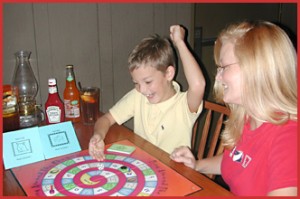 (1) Many children are struggling with their ability to read. So many families have a need for a tutor that can help. But the cost is often not affordable for those families. However, with Ring Around The Phonics, you can easily teach up to 4 children at a time charging 10.00 per hour for each child….40.00 per hour for you. Now that is much more affordable for those families, and lucrative for you. Some of the students in the education department at the University Of North Florida are doing this, and it is working out quite well for them.
(1) Many children are struggling with their ability to read. So many families have a need for a tutor that can help. But the cost is often not affordable for those families. However, with Ring Around The Phonics, you can easily teach up to 4 children at a time charging 10.00 per hour for each child….40.00 per hour for you. Now that is much more affordable for those families, and lucrative for you. Some of the students in the education department at the University Of North Florida are doing this, and it is working out quite well for them.
Contact us for more information about making money using Ring Around The Phonics.
If The Child Knows Their Phonic Sounds, But is Having Trouble (Teaching Strategy for Phonics and Reading)
Today way too many children know their phonic sounds, but struggle as slow readers They have difficulty blending the phonic sounds to form words. Furthermore, they are often poor spellers. There can be many reasons such as hearing problems, and vision problems. However the most common cause is as follows:
Computer games teach several of the following phonic sounds incorrectly: B, C, D, G, H, J, K, (occasionally M), P, T, W. Computers add a u sound at the end of many of these letters to make them more audible to the listener. We do not say Hu-a-Pu-Y for happy, nor do we say Du-a-du-y for daddy. Think about how difficult it is to hear happy when pronouncing it as hu-a-pu-y. Most of the struggling readers I have helped were pronouncing one or more of these sounds incorrectly.
Real Life Example:
For one of my students, it was simply the letter W that caused her trouble with reading. Because she was having trouble sounding out words with w in them, she concluded that “something was wrong with her”. It became a self-fulfilling prophesy. So, she freaked out every time she was asked to read from her early reader books… proclaiming with great emotion: ” I can’t”! But, by using the game “Ring Around The Phonics, she was re-taught the correct way to say the sound of the W. I also used the board to help her blend the sounds. Because games are whole brain teaching, stress was reduced, and she quickly learned.
However, at first the books still stopped her in her stacks. The sight of a book still evoked an emotional response. So once I was sure she knew the phonic sounds, and could read words placed on the board, we stopped playing the game and did as follows:
The goal was to reduce her stress:
When she came to a word in the book that stressed her, I simply placed that same word on the board using the static cling letter cards provided. She could read it on the board, but not the book. So I kept pointing to the word on the board, and then to the same word in the book. I repeated this process until she finally realized she could read books!
This little girl went from failing to top reader. The teacher even said it improved her spelling. So don’t underestimate the problems that phonic sounds learned incorrectly can cause. It is important to get the basics right. Therefore we recommend you, the educator, teach the phonic sounds so that you are sure they are learning the basics correctly. Click Here To Hear The Phonic Sounds free (video format for adults)
Teaching Strategy for Kinesthetic/Hands on Learners
Kinesthetic learners learn best by moving their bodies, activating their large or small muscles as they learn. These “hands-on learners” or “doers” concentrate better and learn more easily when movement is involved. The following characteristics are often associated with kinesthetic learners-you may see some of these characteristics in your child if you’ve been struggling with typical phonics lessons.
- Kinesthetic learners often wiggle, tap their feet, or move their legs when they sit.
- Hands on learners were often falsely labeled “hyperactive” as children.
- Because they learn through movement, kinesthetic learners often do well as performers: athletes, actors, or dancers.
- Kinesthetic learners work well with their hands. They may be good at repairing work, sculpting, art, or working with various tools.
- They are often well coordinated and have a strong sense of timing and body movement.
Ring Around the Phonics is the perfect program for teaching “hands on learners” how to read. The very essence of the game encourages getting the child to move, whether he is moving the game piece, rolling the die, or playing the activity cards.
History of the Ring Around The Phonics
In the 70s, I worked in the public school system as a teacher’s aid, I was given eight children who had not learned to read as had the rest of their class. They were in the midterm of first grade, and were expected to be retained because of their inability to read. I had to come up with Teaching Strategies for Phonics and reading.
The self-esteem, of these 8 children, was at very low, because they knew they had not performed as expected. The other children viewed them as being at the bottom of the class totem pole.
Example:
One of these 8 was an unusually bright child, who was simply a hands on learner. He was a farm boy who often helped around the farm by driving the tractor. His grandparents let him drive an old car around their property. But, He was having more trouble than any of the others with his reading, so he was at the bottom of the bottom of this totem pole.
We started out by using the curriculum the rest of the class had learned to read with. As this boy began to read, one of the other boys called him a “dummy”. His little face dropped, and not a sound came out of him. It was so sad. I replied, “Oh no, he is quite smart. Did you know that he can drive?” The little boy’s eyes grew large as he lifted his head, and looked at me with a surprised look. This suddenly gave him status in this group. Most of these children were capable of learning to read. Therefore, I could not give up on them.
If it isn’t working, change:
The school curriculum was not working for these 8 children. What was needed was something that involved all the learning styles, was fun, brought quick results, and would be a win-win situation. To my amazement, (through a dream) evolved an early version of Ring Around the Phonics board game.
The Game Begins
I began by telling them, they could belong to a secret club, called the American Club, and it had a secret code that we were going to learn. The secret code was the phonics sounds of course, but they were not told that. They were also told that once they had all learned the first eight letters, they would read their first book together. It is highly motivating for the children to see results as quickly as possible.
As they progressed along the board saying the sounds, they began to assist each other. Often I had to instruct them to keep quiet and let each player say the sound by themselves. As they mastered some letters, they were anxious to read, and kept asking me to do so. I reminded them that everyone had to learn eight sounds first. We would all do it together (It is not necessary to make children wait for the whole group to catch up, but it seemed right for this group). When the time came, I moved aside the board, and passed them all a book. They were so excited!
Click here: Ring Around The Phonics works:
I wish you could have been there to see. They took turns reading. As each child read, they frequently paused, hugged themselves , and giggled uncontrollably. I couldn’t help but giggle right along with them. As each one read, the giggles turned into group laughter. It was truly more fun than I can explain.
Because of Ring Around the Phonics, seven of the eight children (including the little farm boy) caught up with their peers and graduated that year with their class. Their teacher was surprised.
Ring Around The Phonics Blesses even more children:
Many years later my daughter was looking for something to help her son learn to read, and wasn’t finding anything that worked. I told her about this game. She took it, added more fun activities and rewards (DeeDee is gifted that way). As a result, she taught her son to read.
My Daughter also added specially designed first readers, and detailed parent guides. She shared the idea with several home school friends. You will find some of their comments on our web site
As a result, This learning game originated from a miracle. It was later developed by a professional tutor, a home school mom, a game designer, and an English professor (who edited the books). It is now ready for you to purchase Here
Learning to read with phonics verses word memorization
Children who are taught to read by memorizing the words, rather than being taught phonics may do well until about the fourth grade. At that time most begin laboring with their reading. In elementary school, I was one of those statistics.
I began having difficulty in the third grade. It was easy memorizing a few words. But as the number of words increased, so did the difficulty. By the time I reached senior high, I knew that I needed to do something before moving on to college. My grades were fine, but it took me forever to read my lessons.
I did not like reading, and only did it because I was serious about my grades and education. So, I enrolled in a speed reading class. My speed in reading picked up only slightly. Most of the other students picked up a lot. It was very discouraging because I did not really understand what the problem was until I had to help my children learn phonics.
It was like the missing link in the chain. My speed in reading picked up tremendously, and it became less laborious to read.
How to use this game in a class room setting (Teaching Strategy for Phonics and Reading)
Ring Around the Phonics is designed to be very flexible. You, the educator, are in the best position to know what your children need. The following information will help you use this game in the classroom setting:
- Please feel free to contact us if you need more pawns and rings.
- Not all of the game cards are suitable in every situation. Some children are more active than others. We show you how to use the cards that are best suited for your class room.
- Each level has custom designed books to go with that particular level. However, once all three levels are in your possession, feel free to rearrange the sequence of the static cling letters so that you can use any of our beginning readers you choose. Bob Books also work well with this game.
- This game was originally developed for a group of public school children that were having difficulty learning to read. It works very well in class room reading groups, and homevschool.To build self-esteem, you will find that there are several reading rewards along the way, and everyone is a winner as they progress along the game board.
- To build confidence we have designed the game so children can begin reading quickly. If you choose to use books other than those that come with the game this may not be the case. However, “Bob Books” use the same timing as Ring Around the Phonics. Back To Articles List
Teaching comprehension listening skills and sequencing / Teaching Strategies for Phonics and Reading
Too often comprehension tests are used to teach comprehension. These tests are more effective in finding out the child’s level of understanding what they have read, rather than teaching comprehension. Here are some Teaching Strategies for Phonics that will help teach this skill.
The Activity cards enclosed in the game (Level I) teach basic comprehension, listening skills, and sequencing. Ring Around the Phonics uses the whole brain teaching method.
Furthermore, once the child knows all their phonic sounds, and is able to read efficiently, you can have the children role play (using their reading books). This will also teach comprehension. Back To Articles List
Gift Idea
Thinking about a gift idea? Give the gift that lasts a life time . . . the gift of reading. Back To Articles List
Fund raiser
Looking for a fund raiser? If your group is looking for a fund raiser, feel free to contact us. Giving the gift of reading is a great fund raiser for any type of educational group. Back To Articles List
Why should learning phonics and reading be fun?
So many parents and teachers have used flash cards to teach phonics. If your child is enjoying this approach, then please continue. However, if you and your child are struggling with this method, you will definitely benefit from this game. Reading is the most important precursor to your child’s education. Children who enjoy reading early tend to enjoy reading as teens and adults. The more your child reads the more he or she learns. Reading is fun and exciting and we show you how to do just that. (See article 1 above: Brain Based Approach To Teaching And Learning)
Be leery of other phonics programs that claim to be games. Make sure they are not just glorified flash cards. We at Ring Around the Phonics take our fun learning very seriously which makes your job easier.
Frequently Asked Questions about Teaching Strategies for Phonics and Reading
Question:
Hello,
I have a question about your product Ring Around Phonics. I have a son who is reading short vowel words. And I am trying to figure out from your website what age this game is useful for. Does it teach all
phonics or just beginning phonics? From the website It seems like it is
more for learning the sounds of the letters and blending them together, but what I am looking for is a game that helps to teach all the phonics rules in a fun way. My son is in first grade and is about to learn beginning blends like bl, cl, sh, etc. and long vowels. Is this
something your product teaches?
Thanks for your time,
Amy
Answer:
Dear Amy,
The following will answer your question: How It Works.

